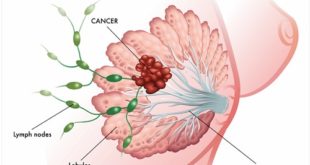What’s New in Breast Cancer Research?
Researchers around the world are working to find better ways to prevent, detect, and treat breast cancer, and to improve the quality of life of patients and survivors.
Breast cancer is being studied in many medical centers throughout the world. Some of the many active areas of research include:
- Breast cancer causes
- Reducing breast cancer risk
- Managing DCIS
- New lab tests for breast cancer
- New imaging tests for breast cancer
- Breast cancer treatment
Causes of breast cancer
Studies continue to uncover lifestyle factors and habits, as well as inherited genes, that affect breast cancer risk. Here are a few examples:
- Several studies are looking at the effect of exercise, weight gain or loss, and diet on risk.
- Studies on the best use of genetic testing for BRCA1 and BRCA2 mutations continue at a rapid pace.
- Scientists are exploring how common gene variations (small changes in genes that are not as significant as mutations) may affect breast cancer risk. Gene variants typically have only a modest effect on risk, but when taken together they may potentially have a large impact.
- Potential causes of breast cancer in the environment have also received more attention in recent years. While much of the science on this topic is still in its earliest stages, this is an area of active research.
- A large, long-term study funded by the National Institute of Environmental Health Sciences (NIEHS) is now being done to help find the causes of breast cancer. Known as the Sister Study, it has enrolled 50,000 women who have sisters with breast cancer. This study will follow these women for at least 10 years and collect information about genes, lifestyle, and environmental factors that may cause breast cancer. An offshoot of the Sister Study, the Two Sister Study, is designed to look at possible causes of early onset breast cancer. To find out more about these studies, call 1-877-4-SISTER (1-877-474-7837) or visit the Sister Study website (www.sisterstudy.org).
Reducing breast cancer risk
Researchers continue to look for medicines that might help lower breast cancer risk, especially in women who are at high risk.
- Hormone therapy drugs are typically used to help treat breast cancer, but some might also help prevent it. Two drugs, tamoxifen and raloxifene, are already approved for this purpose, although concerns about side effects have limited their use. Aromatase inhibitors such as exemestane, anastrozole, and letrozole are also being studied to reduce the risk of breast cancer.
- Many other drugs are also being studied as ways to help reduce the risk of breast cancer.
Other clinical trials are looking at breast cancer reduction as an unintended effect of drugs used for other reasons. Drugs of interest include bisphosphonates (drugs for osteoporosis), COX-2 inhibitors, non-steroidal anti-inflammatory drugs, and statins (used to lower cholesterol). - Dietary supplements are also being studied to see if they can reduce breast cancer risk. These have included linoleic acid, folate, omega-3 fatty acids, and vitamins B6 and D. Although some human studies of these supplements have been completed, very little has been published in the available medical literature to date.
This type of research takes many years. It might be some time before meaningful results on any of these compounds are available.
Managing DCIS
In ductal carcinoma in situ (DCIS), the abnormal cells are just in the top layers of cells in the ducts within the breast and haven’t invaded any deeper. In some women, DCIS turns into invasive breast cancer, or sometimes an area of DCIS contains invasive cancer. In some women, though, the cells just stay within the ducts and never invade deeper or spread to lymph nodes or other organs. The uncertainty about how DCIS will behave can make it hard to choose the best treatments. Researchers are looking for ways to help with these challenges.
Researchers are studying the use of computers and statistical methods to estimate the odds that a woman’s DCIS will become invasive. Decision aids are another approach. They ask a woman with DCIS questions that help her decide which factors (such as survival, preventing recurrence, and side effects) she considers most important in choosing a treatment.
Another recent area of research and debate among breast cancer specialists is whether changing the name of DCIS to one that emphasizes that this is not an invasive cancer could help some women avoid overly aggressive treatment.
Newer lab tests
Tests for circulating tumor cells (CTCs)
Researchers have found that in many women with breast cancer, cells may break away from the tumor and enter the blood. These circulating tumor cells can be detected with sensitive lab tests. Although these tests can help predict which patients may have breast cancer that has spread beyond the breast (metastatic disease), it isn’t clear that the use of these tests can tell whether the cancer will come back after treatment (recur) or help patients live longer.
Newer imaging tests
Newer imaging methods are now being studied for evaluating breast changes that may be cancer.
Scintimammography (molecular breast imaging)
In this test, a slightly radioactive drug called a tracer is injected into a vein. The tracer attaches to breast cancer cells and is detected by a special camera.
This technique is still being studied to see if it will be useful in finding breast cancers. Some doctors believe it may be helpful in looking at suspicious areas found by regular mammograms, but its exact role is still unclear. Current research is aimed at improving the technology and evaluating its use in specific situations such as in the dense breasts of younger women.
Treatment
Oncoplastic surgery
Breast-conserving surgery (lumpectomy or partial mastectomy) can often be used for early-stage breast cancers. But for some women, it can result in breasts of different sizes and/or shapes. For larger tumors, it might not even be possible, and a mastectomy might be needed instead. Some doctors are addressing this problem by combining cancer surgery and plastic surgery techniques, known as oncoplastic surgery. This typically involves reshaping the breast at the time of the initial surgery, such as doing a partial breast reconstruction after breast-conserving surgery or a full reconstruction after mastectomy. Oncoplastic surgery may mean operating on the other breast as well to make the breasts more alike.
Targeted therapy drugs
Targeted therapies are a group of drugs that specifically target gene changes in cancer cells that help the cells grow or spread. New targeted therapies are being studied for use against breast cancer, including:
PARP inhibitors: These drugs are most likely to be helpful against cancers caused by BRCA mutations, and have shown some promise in treating some types of breast cancers. Further studies are being done to determine when these drugs might be most helpful.
Anti-angiogenesis drugs: For cancers to grow, blood vessels must develop to nourish the cancer cells. This process is called angiogenesis. Blocking angiogenesis may prove useful in breast cancer treatment. Several anti-angiogenesis drugs are being tested in clinical trials.
Other targeted drugs: Other potential targets for new breast cancer drugs have been identified in recent years. Drugs based on these targets are now being studied, but most are still in the early stages of clinical trials. There’s a special research interest in targeted drugs to treat triple negative breast cancers.
Bone-directed treatments
When breast cancer spreads, it often goes to the bones. Some drugs can help treat the spread of cancer to the bones, and might even help prevent it. Studies are looking at whether any of these drugs might help other cancer treatments work better.
Researchers are looking for new drugs to treat breast cancer that has spread to the bones. They’re also looking for ways to identify and target the markers that affect bone turnover.
Treatment side effects
Late and long-term side effects of different types of breast cancer treatment are another active area of research. Studies are looking at what the side effects are, as well as how to manage them.
 Female Cancer Specialist Doctor in Kanpur female, doctor, cancer, specialist, female, oncologist, oncology, medical, oncologist, chemotherapy, breast, blood, mammography, prostate, center, hospital, radiotherapy, surgery, mouth, kanpur, sn, memorial, female, doctor, cancer, specialist,
Female Cancer Specialist Doctor in Kanpur female, doctor, cancer, specialist, female, oncologist, oncology, medical, oncologist, chemotherapy, breast, blood, mammography, prostate, center, hospital, radiotherapy, surgery, mouth, kanpur, sn, memorial, female, doctor, cancer, specialist,

